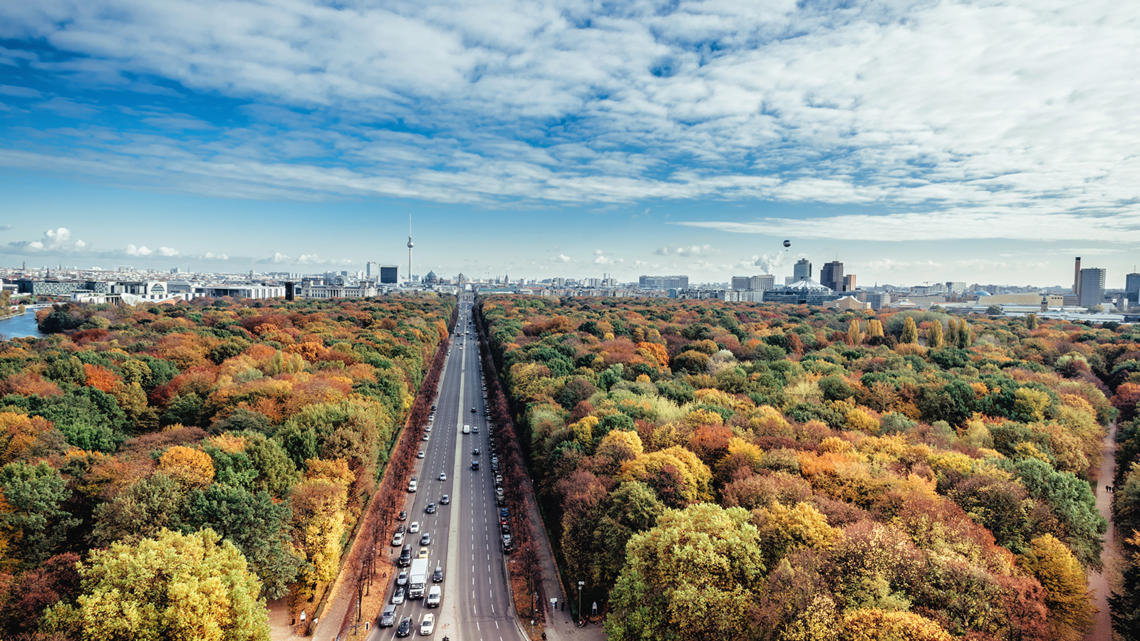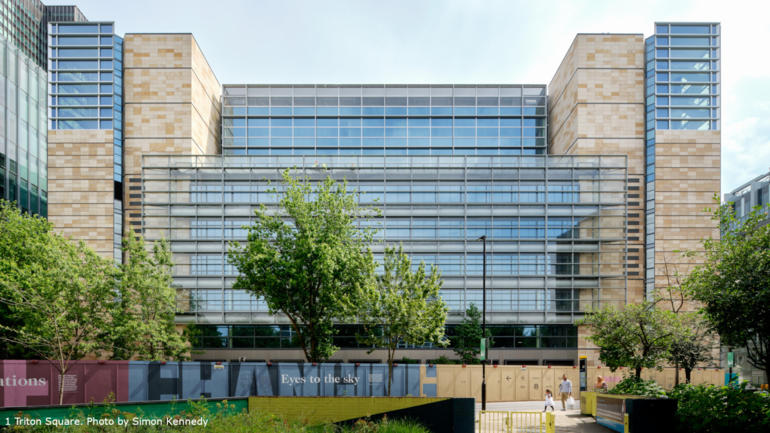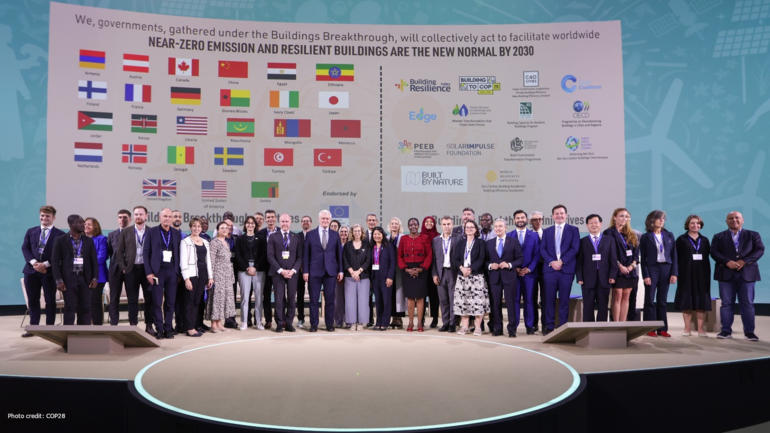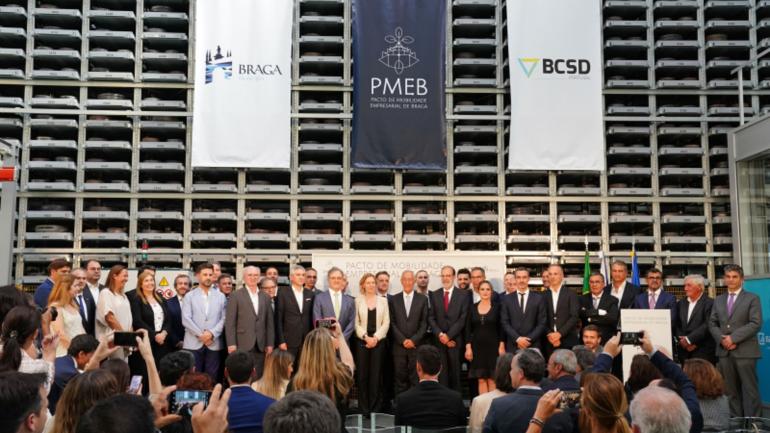Cities are on the frontlines of COVID-19, with urban residents facing devastating health and economic impacts. Many city leaders are responding with creative solutions, recognizing that actions in response to the pandemic can also make cities greener and more climate resilient. Addis Ababa, Bogota, Kampala, Berlin and Brussels created new bike lanes to reduce risk of COVID-19 transmission and decrease congestion, pollution and greenhouse gas emissions. In Sierra Leone, Freetown installed rainwater harvesting systems in 68 informal settlements and started an urban farming initiative to increase food security while mitigating flood and heat risks. In Quebec, Amsterdam, Germany and Pakistan, city, provincial and federal governments passed stimulus packages that advance a resilient recovery and green jobs.
While these examples illustrate promising moves toward recovery and resiliency, cities of all sizes are also struggling to maintain essential services during the pandemic, such as access to water and sanitation, healthcare and social safety nets. The urban poor, migrants and low-wage workers are often the most affected and, in addition to lacking essential services, experience overcrowded living conditions, pre-existing chronic health conditions and food shortages. Climate change impacts, such as flooding, storm damages and heatwaves are compounding these problems, which also impact low-income people the most.
Together the compounding impacts of COVID-19 and climate change are shining new light on the deep inequities confronting cities around the world, revealing immense problems and highlighting opportunities for new approaches. This commentary identifies where these issues intersect and offers win-win-win solutions that can simultaneously address the pandemic, climate threats and inequality. These insights will hopefully inform conversations already underway among city leaders, urban planners, civil society groups and ordinary city residents seeking practical responses to an unprecedented set of challenges.
Cities face three compounding crises
The COVID-19 pandemic exposed urban inequities that have worsened over the decades. More than 1 billion city dwellers today lack access to affordable and secure housing, and nearly 3 billion lack access to basic hand washing facilities in their homes. In developing countries, up to 70% of the urban population lacks access to core services and infrastructure, relying instead on informal or alternate arrangements for water, sanitation, transportation and energy. These are especially massive problems during a pandemic of an extremely infectious disease.
Many developing country cities are highly under-resourced and unable to serve the basic needs of growing populations, locking poor communities in cycles of poverty, poor health and low productivity. Even cities in developed countries are seeing growing inequalities due to rising income disparities and lower job security in the market economy. Cities are also experiencing reduced investment in social safety nets paired with spatial segregation policies and social exclusion structures — including investments that exclude groups of people based on race, ethnicity, gender, class, caste and economic status.
During the pandemic, global reports of violence against racial and ethnic minorities and gender-based domestic violence are rising, indicating that systemic issues of socio-political segmentation and oppression are resurfacing. This pandemic shows that these inequalities not only hurt poor and marginalized communities disproportionately — they undermine the health and wellbeing of entire cities.
The health and economic impacts of the pandemic, climate change and inequality are deeply intertwined. They are especially harmful for poor people living in slums and other informal settlements. In May, the ILO reported that three out of four global workers employed in the informal economy were significantly affected by the pandemic.
COVID-19 has also led to revenue declines, creating budgetary shortfalls for cities around the world. This affects city planning, forcing cities to defer infrastructure projects and capital investments. This is certain to further stifle job growth and local economic activity and impact cities’ abilities to deliver essential health and safety services.
At the same time, the pandemic comes on top of climate change impacts, such as increased heat waves, floods, hurricanes and droughts. According to recent research published in Nature Climate Change, many cities that so far avoided a climate-related disaster are likely to see one within the next 12 to 18 months. Amid a pandemic, preparing for and recovering from these disasters is much more challenging.
For example, Cyclone Amphan made landfall in May 2020, while cities in Bangladesh and eastern India were still recovering from the impacts of Cyclone Bulbul in fall 2019. To make space, governments exempted institutional quarantine in some states for returning migrants and converted quarantine shelters to cyclone shelters. Given the roughly 6 million evacuees from Amphan, though, maintaining social distancing was extremely challenging and revealed the difficulties in assessing trade-offs between multiple risks.
In South Africa, local authorities struggled to maintain social distancing during flooding, specifically in informal settlements where social distancing was already difficult to enforce. In Zimbabwe, a months-long drought left millions without access to clean water and at risk of acute food insecurity since June. In other parts of Eastern Africa, residents expect to face the “triple threat” of flooding, locust swarms and COVID-19.
Cape Town’s Executive Director and Chief Resilience Officer Craig Kesson said, “Having so recently come through the drought crisis, we are now constructing our learning and self-reflection, so that we’re documenting how we learn as we go through this crisis, and what we learned from the last one.”
As we enter what could be one of the hottest years on record, cities are already seeing extreme heat waves. In late July, Baghdad saw four 120 degrees F (48 degrees C) days in a row. In addition to causing high fatalities, these heat waves will likely disrupt power supplies, overcrowd hospitals and strain emergency services. Climate change impacts like these are getting more severe every year.
Rethinking and repositioning cities
Urban leaders have long predicted that the future lies with the world’s densest, largest and most cosmopolitan cities. Cities are vibrant social centers, economic drivers and workplaces for billions of people around the world.
While some blame the virus’ spread on cities’ density and layouts, studies confirm this isn’t the case. Many high-density, well prepared cities with adequate access to basic services, health care, emergency preparedness and healthy public spaces reduced the spread of COVID-19. Now, cities can reimagine the future, using the pandemic as an opportunity to deploy solutions that build health, equity and climate resilience in order to maintain their lure. While this task will pose new challenges, cities are already seeing the benefits in changing old ways and scripting new goals for a more just, green and resilient future.
“Freetown’s recovery from the COVID-19 pandemic will be an uphill climb,” said Yvonne Aki-Sawyerr, the mayor of Freetown, in a recent press release. “But as a city, we will ensure that, like our response, recovery is focused on bringing some of the city’s most vulnerable along. Freetown’s commitment to improving public services post-COVID, particularly sanitation, will make our city more livable for all whilst creating much needed jobs in the circular economy.”
Making cities more resilient, circular, smart, inclusive and connected is not a luxury but a necessity. Many cities are rethinking the use and management of public spaces, infrastructure and essential services. For example, cities in the United States, United Kingdom and Canada instituted temporary bans on evictions but are struggling to control virus transmission in shelters for the homeless and the housing insecure.
Across the globe, city and national governments also began recalibrating their existing transportation networks by creating spaces for micro-mobility of pedestrians and cyclists, in addition to redefining outmoded hygiene and cleanliness standards. In South Asia, corner stores and small businesses are stepping up home delivery services by leveraging technology. And as financial relief for economic and industrial establishments begins to trickle, calls for long-term structural changes are growing louder.
Cities must also rethink how to activate, integrate and mainstream grassroot responses into their recovery efforts. Micro-urban clusters, such as informal settlements and peri-urban enclaves, demonstrated new models of localized responses to COVID-19. For example, in Kigali, Rwanda, local initiatives used community WhatsApp groups to provide food to more than 40,000 vulnerable households.
Kigali’s chief resilience officer, Japheth Habinshuti, said, “The ability displayed by grassroots communities around the city to self-organize, identify households at risks of the pandemic impacts, collect aid and deliver timely assistance to their neighbors is an indication that solidarity is a crucial asset for communities to maintain hope and survive in times of crisis.”
However, no one city is the same as another. City governments’ responses to crises depends on many factors — resources, regulations, socio-economic inequalities, political will and awareness, to name a few — that vary by city. As cities plan for recovery and investment in key services and infrastructure, they must also address the underlying stresses exposed by the pandemic. That requires collaborating with citizens, organizations and businesses on regulations and policies.
Six solutions for cities to tackle the triple crisis
As cities recover from COVID-19, smart investments and policies on resilience can create a triple dividend: helping cities boost their economies; improving equity; and preparing communities for inevitable climate and health threats.
According to the Global Commission on Adaptation’s Adapt Now report, adaptation investments consistently deliver high returns, with benefit-cost ratios ranging from 2:1 to 10:1. Plus, adaptation often creates more jobs per dollar spent than traditional investment, and many of those jobs are at the local level.
The following six priority solutions can help cities simultaneously recover from COVID-19 and build a more resilient, inclusive future. These solutions can deliver immediate benefits to the most vulnerable people, while also building cities’ long-term capacity to adapt to climate change.
1. Strengthening climate resilience and basic services of urban poor settlements.
Inadequate handwashing and sanitation facilities and lack of space to socially distance is causing many informal communities in India and other regions to become COVID-19 hotspots, impacting public health citywide. A majority of low-income communities living in informal settlements also occupy high climate-risk lands, and 600 million of the 1 billion people living in informal settlements are on unprotected coastlines, flood plains and unstable hills.
Cities must recognize and address these stark realities of urban inequality in order to prosper. Upgrading settlements for the urban poor should be at the heart of cities’ development and adaptation plans. These upgrades should focus on safe, reliable and affordable water, sanitation facilities and access to healthy spaces and climate-resilient housing retrofits. Urban poor communities must be part of the process, as they can provide information on the unique vulnerabilities and risks they face and help design effective solutions. This generates a sense of ownership and localized management of resilience needs.
For example, a partnership between the United Nations and Government of Vietnam aims to build storm-proof housing for vulnerable coastal communities. This project, funded by the Green Climate Fund, targets the poorest households and prioritizes ethnic minorities, disadvantaged families, the elderly and people with disabilities.
In 2004, Uplink, an aid organization working on earthquake and tsunami response in Banda Aceh, Indonesia, successfully enabled in-place re-construction and rehabilitation of 26 affected communities through a community-led process.
Meanwhile, programs such as U.N.-Habitat’s Flagship RISE UP: Resilient Settlements for the Urban Poor aim to provide evidence-based solutions to countries, cities and communities that integrate community-based adaptation initiatives with city-level and National Adaptation Planning (NAPs) and other policy processes (such as NDCs and NUP) to create the conditions for more investments to combat poverty.
2. Building water-resilient cities.
Water access is central to economic development and human health. Many cities, however, cannot provide adequate water and sanitation services to their residents. These cities are often water stressed and unable to manage limited resources effectively amid increasing climate variability, natural disasters and growing demand. Water-related conflicts are also rising, destabilizing regions. To build water resilience, cities must urgently align their urban development patterns to the natural water cycle; better protect and improve the management of watersheds and resources beyond their boundaries; and incorporate more effective water reuse and recycling measures.
Beginning in 2020, WRI and partners, with support from the German Federal Ministry of Economic Cooperation and Development (BMZ), launched a multi-city, multi-year Africa Urban Water Resilience Initiative. The program aims to develop research to illuminate urban water resilience challenges and pathways in Africa; partner with cities to develop urban water action plans and provide technical assistance to advance implementation of priority actions; and mobilize collective action by improving the enabling environment, including policy alignment at regional and national levels and increased public-private investment in water resilience.
Rotterdam, a low elevation harbour city that faces multiple water risks, is a leading city on water resilience. Rotterdam is shifting from viewing water as an isolated policy arena to a holistic policy sphere. Water and urban adaptation are now used as leverage to create a better and more attractive city that aims to become climate proof by 2025. Recently seven city projects, with a focus on climate adaptation, were launched as part of their COVID-19 resilient recovery plan.
In addition to improving water resource management, cities, national governments and development agencies must increase investment in reliable, affordable drinking water and sanitation for the urban poor. This includes integrating off-grid providers and looking at innovative decentralized solutions, in addition to traditional piped supplies. For example, the city of Kampala, Uganda, utilized a mobile platform to manage and monitor fecal sludge collection and disposal services for the communities living in informal settlements. This is done in an environmentally responsible and safe manner and integrates informal sector providers.
Other cities like Indore, India, used community stewardship to build water resilience and restore its urban lakes through a city and civil society partnership supported by Asian Cities Climate Change Resilience Network (ACCRN). This helped the city improve its water quality to sufficient levels, allowing the lakes to serve as additional sources of water for the city.
3. Advancing nature-based solutions to address climate risks.
Healthy natural environments offer a strong defense to natural disasters and can reduce the risk of zoonotic diseases.
Nature-based solutions (NBS) can improve cities’ water quality, reduce heat and flood risks, restore ecosystems, reduce biodiversity loss and provide public health benefits through improved air quality and recreation. Moving forward, cities must integrate nature-based solutions into planning, policies, programs, investments and infrastructure to enhance climate resilience and advance economic recovery.
The Global Commission on Adaptation’s Cities Action Track is catalyzing and scaling financial investment in trees, forests and green infrastructure by supporting early-stage project and business planning to create a pipeline of bankable NBS projects in cities. This is a critical missing link between investors willing to put money and cities needing finance to recover, as recently highlighted by Cities Climate Finance Leadership Alliance. In addition, cities and community organizations need more practical tools to design, procure and implement NBS projects, such as those provided by Cities4Forests.
Further, Gorakhpur, India, shows a successful model for grassroots action on nature-based solutions. The Gorakhpur Environmental Action Group and the city initiated ecosystem-based adaptation action to develop climate-resilient agricultural models that enhance food security and livelihoods for peri-urban farmers, reduce flood risks and improve water security.
In 2010 and 2011, the city of Durban, South Africa, initiated three large-scale community reforestation projects to create new carbon sinks and deliver multiple adaptation benefits, including enhancing biodiversity, improving water and air quality and offsetting the carbon footprint of the FIFA World Cup, which the country hosted that year.
4. Building knowledge networks for urban adaptation.
During the pandemic, data and modelling work done by academic and research partners provided valuable insights to city, state and national governments to design confinement and tracing measures. Countries like Rwanda partnered with researchers to develop and implement innovative pooled testing. To become more climate resilient, cities must similarly develop the knowledge and capacity of their future leaders, from science to practice. Universities are uniquely positioned to mobilize talent, develop knowledge and collaborate across disciplines and borders. By integrating urban resilience into their curricula, universities can shape future climate stewards and leaders who have a holistic understanding of the cross-sectional impacts of climate change.
Understanding this, the Resilient Cities Action Track recently launched an initiative to improve university, government and community collaboration. The initiative is bringing these diverse stakeholders together to combine research expertise and on-the-ground knowledge to solve real-life climate-related problems. The initiative aims to produce action-oriented research that combines local knowledge from community groups and grassroots organizations, the latest climate science research, and knowledge from the best practices and success stories emerging from cities. This program aims at building long-term partnerships between communities, cities, universities and international partners and, in doing so, evolve local centers of excellence for climate adaptation.
New York City shows one successful model. In 2008, Mayor Bloomberg formed the New York City Panel on Climate Change. The panel consists of leading scientists, academics and private sector practitioners charged with advising the mayor and the NYC climate adaptation taskforce. In 2010, the Institute for International Environment & Development launched ARCAB, a long-term research project that supports adaptation measures for vulnerable communities in Bangladesh. The initiative brings together an action-research consortium made up of practitioners, researchers and international institutions.
5. Enhancing devolved mandates and funding for cities.
As the world enters the worst economic recession since the Great Depression, devolved funding to local governments and community groups should be at the center of recovery packages. By increasing the devolved funding available to cities on a flexible basis, national governments, national banks and international donors enable local actors to enact recovery measures that are specific to local needs. In addition, policy measures to boost local and regional governments capacity to raise revenue, take on debt and secure private equity would be advantageous in supporting direct action.
National Adaptation Plans need to better align with local urban adaptation needs and increased investment in adaptation. Additionally, initiatives like the Coalition for Urban Transitions could empower national governments with evidence-based rationale and policy tools to enhance inclusive urban adaptation. Cities on their account will also need to better use existing city resources to make risk-informed investments, build in contingency and reserve funds, insure critical assets, improve access to financial services for the urban poor and increase their capacity to raise low-cost debt and private capital through financial instruments like bonds, blended finance and Pay For Success instruments for adaptation. Such a forward-looking approach — focused on improving the lives of vulnerable communities in informal settlements, safeguarding natural systems and creating sustainable access to water and sanitation — will support economic recovery in all sectors.
The United Kingdom already granted additional emergency power to local governments through the Coronavirus Act 2020, but demands for local mandates continue to increase. In Germany, the national government removed a requirement for cities to match 40% of the recovery funds they receive so that municipalities could get funding quicker.
Cities also need national mandates to enhance local coordination and capacity. For example, Canada’s five-year $18 million initiative, BRACE, aims to enhance regional collaboration on nature-based solutions for adaptation. The program enables local organizations to deliver solutions by helping them access, use and apply knowledge and tools on climate adaptation in their work.
Green bonds are increasingly recognized as a valuable tool for cities in developing countries to access low-cost debt from capital markets. However, the uptake of green bonds in Global South cities is very low (at about 1.7%), making initiatives like the Green Bonds for Cities critical to providing the required guidance and training for Global South cities to access debt from capital markets.
6. Supporting peer-to-peer city collaboration for deep, long-term and systemic change.
Cities all over the world face many similar problems. By collaborating, they can offer reciprocal support and services. To act fast and scale solutions, cities must not repeat past mistakes and instead build on existing, proven practices and learn together from each other’s experiences and knowledge. Mexico City, for example, translated and adopted Rotterdam’s water squares to its own context and specific needs after the cities shared relevant policies and knowledge in a well-considered learning, exploration, reflection and internalization process.
Institutions like IHE Delft in the Netherlands are supporting such city-to-city learning through structured matching, facilitation and collaboration among cities on water resilience matters. Similarly studies from another program, Future Resilience for African Cities and Lands (FRACTAL), indicate that social, experiential and structured learning can be an innovative way to increase climate resilience planning and support knowledge transfer and policy adoption among collaborating cities. With the Climate Adaptation Academy program, organizations like C40 aim to train city officials and urban planners and provide technical support to cities across the globe to advance climate change adaptation and build resilience.
Looking Ahead at Cities in a Post-COVID-19 World
To deliver on these solutions and enhance collaboration between governments and the communities they serve, cities need collective and coordinated leadership, alongside strategic alliances.
Through its Resilient Cities Action Track, the Global Commission on Adaptation is working with partners to deliver this coordinated leadership as part of its Year of Action. This work is led by the World Resources Institute, the Global Center on Adaptation, the Global Resilient Cities Network, C40 and U.N.-Habitat, in collaboration with the Netherlands’ Ministry of Foreign Affairs and Ministry of Infrastructure and Water. Together, the Commission and its partners are building a 10-year program to accelerate urban adaptation and a comprehensive platform for cities to garner political leverage for action, broker sub-national financing at scale and avoid fragmenting investments and actions in cities.
To secure a safe and healthy future for urban communities, cities must prioritize investments in public health and inclusive climate adaptation while enabling job growth and economic recovery. As of August 2020, over $11 trillion was approved worldwide for COVID-19 stimulus and recovery measures. Much of those funds, however, are not directly available to local governments. And often, only a small percentage of this funding goes to green or climate-resilient measures, with a few notable exceptions like the European Union’s recovery package.
As urbanization trends continue, cities remain critical for sustained global growth. But without proper funding, cities will struggle to recover economically, prepare for future threats and address inequities. With smart investments and policies like the ones proposed by U.N Secretary General, however, cities — and in turn countries — can build a more green, resilient and equitable future.
This article was originally published by WRI








